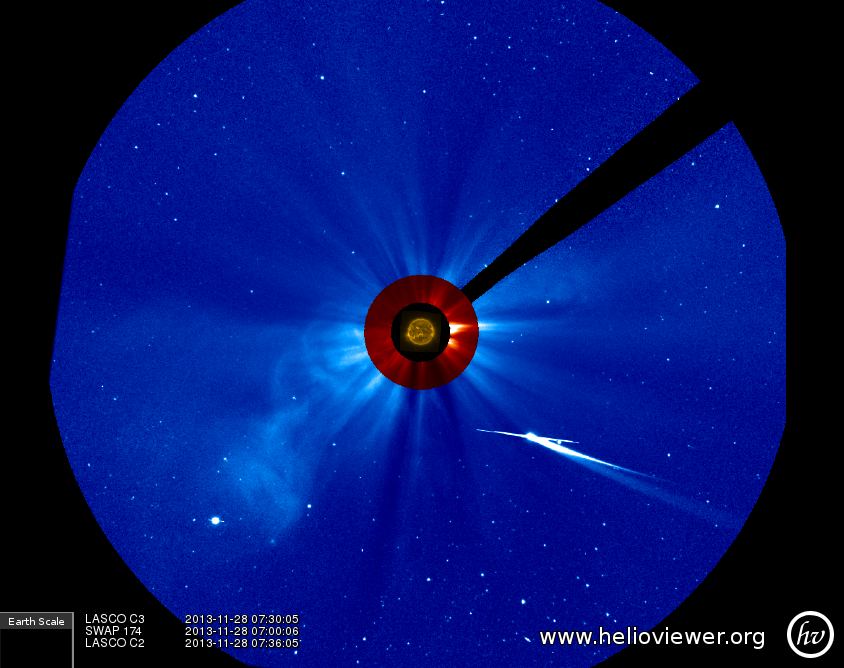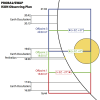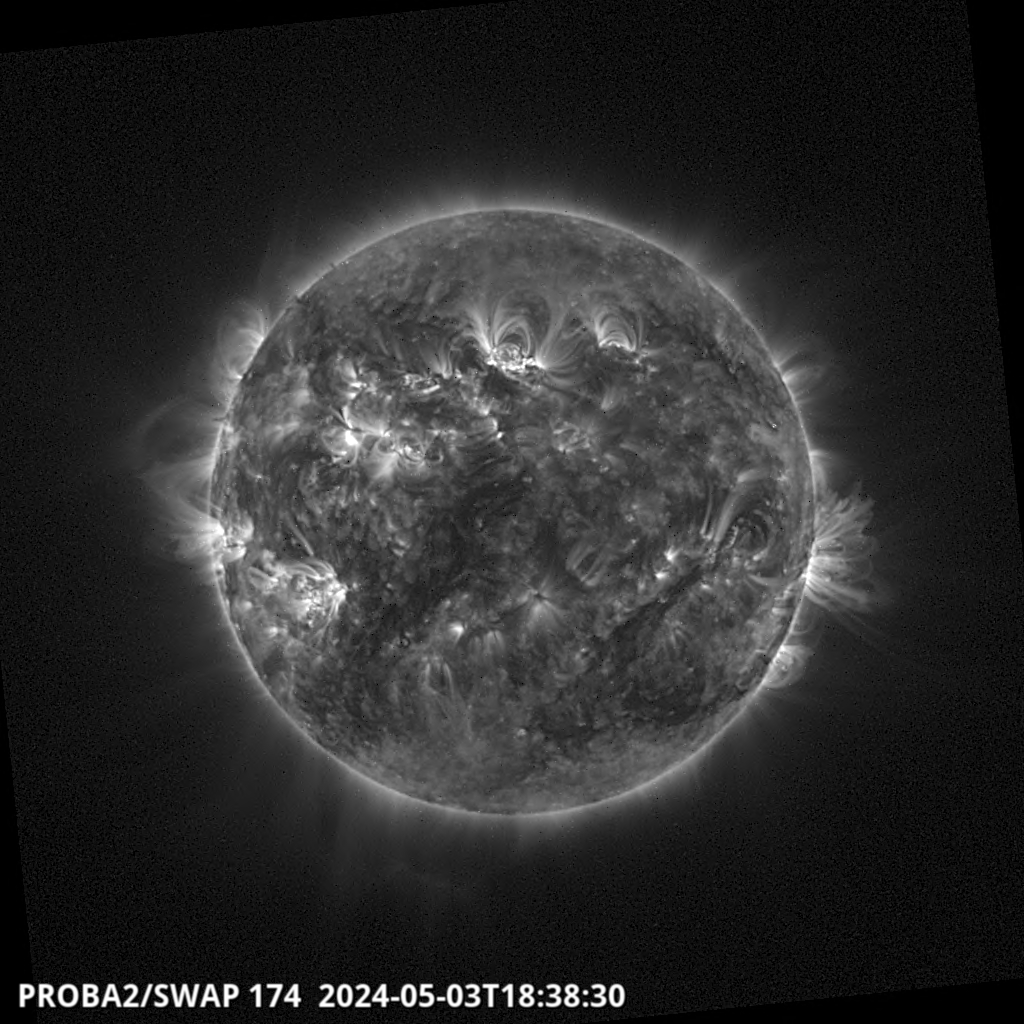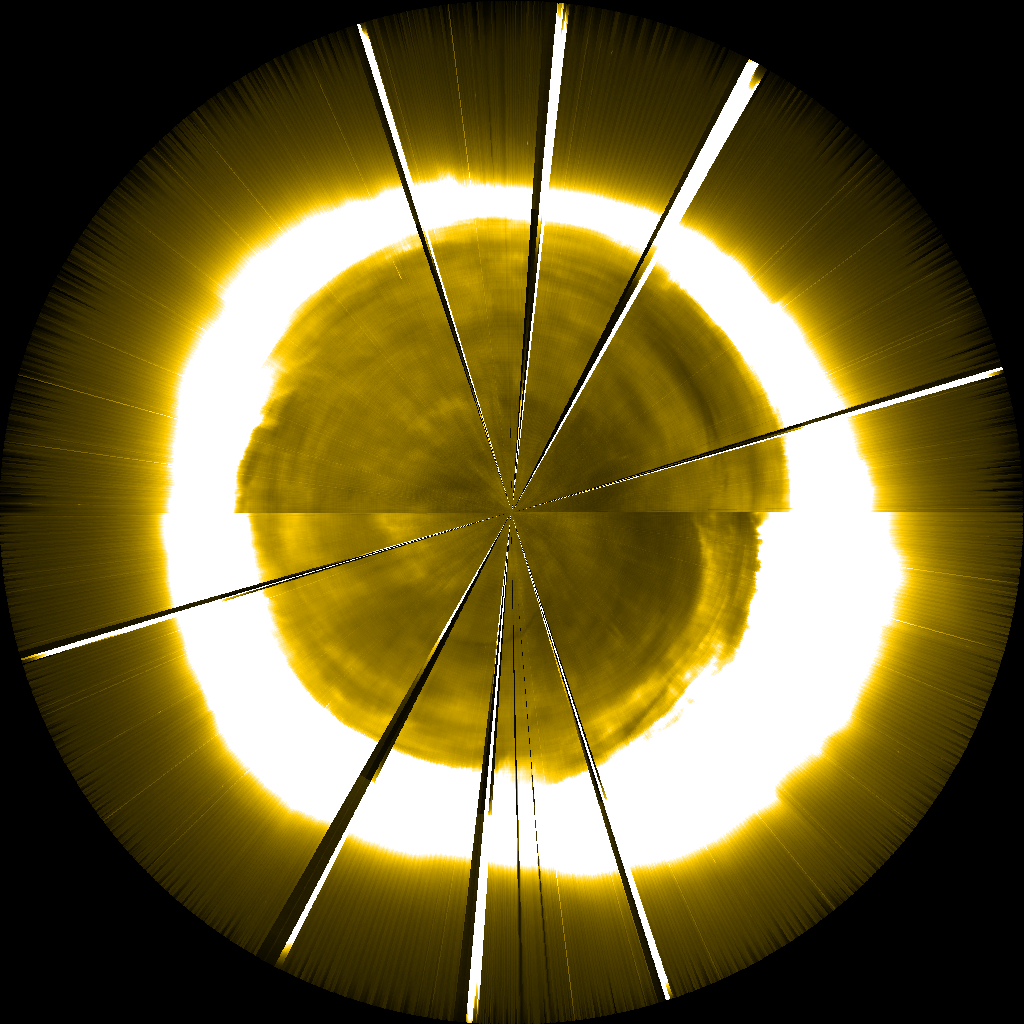Main menu
You are here
PROBA2 waits for Comet ISON
In just a few hours, Comet ISON will whip past the surface of the sun at hundreds of kilometers per second, and PROBA2 is waiting to capture its passage through perihelion.
Comet ISON is expected to reach perihelion, it's closest approach to the sun, around 19:50 Belgian local time, Thursday, November 28. Right now it is racing towards its close encounter with the solar corona, passing through the fields of view of the LASCO Coronagraphs onboard SOHO, as you can see in the image above.
ISON is a unique comet. For billions of years it has orbited Sun at a distance of nearly a light-year as part of the Oort Cloud, until, perhaps a million years ago, it was knocked from its distant orbit by the gravity of a passing star. Now, as it races towards the sun and its icy core begins to melt, astronomers hope it will teach us something about the very origins of the solar system. As part of a massive, world-wide campaign to study the comet, the SWAP imager will attempt to capture images of the comet as it passes the sun. If SWAP is able to see the comet, the observations could yield important information both about comets, the solar corona, and the sun's complex magnetic field.
PROBA2 will conduct three off-point maneuvers as the comet passes the Sun Thursday evening, making use if its large field-of-view and flexible pointing capabilities to capture some hopefully unique images of a unique comet.
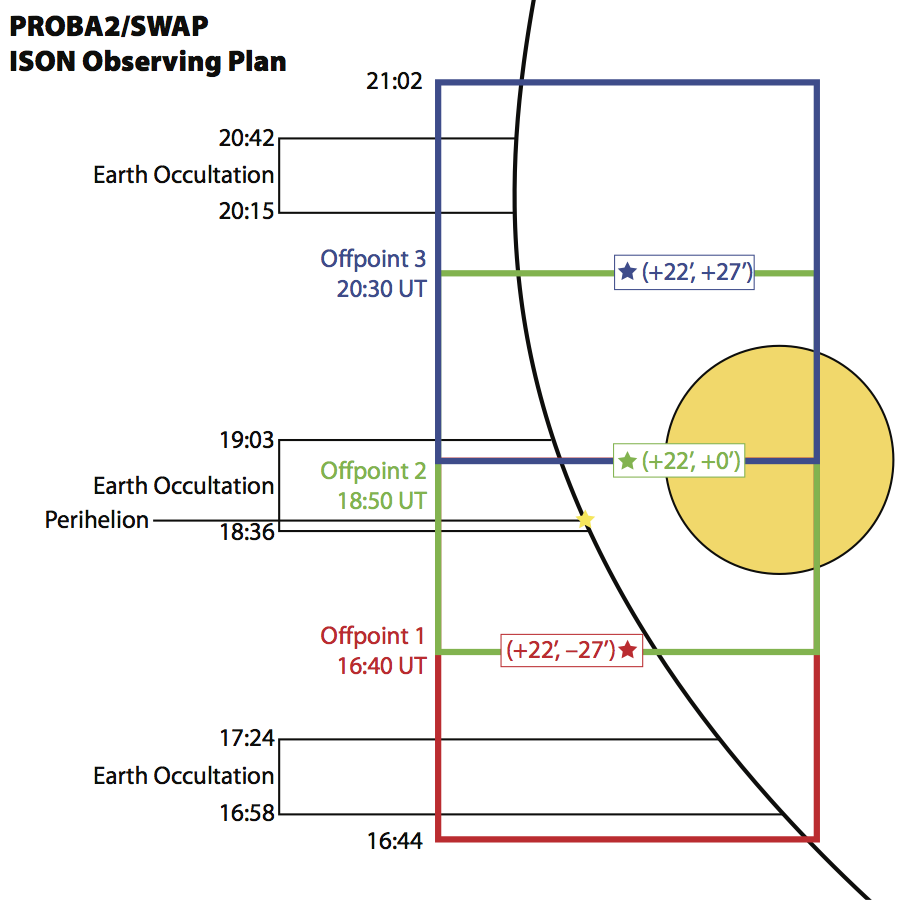
What will we learn? Will we even see the comet? PROBA2 has observed comets before, but ISON will be farther from the sun that our last comet, Lovejoy. Additionally, some astronomers believe ISON may have already disintegrated, and is nothing more than a cloud of rubble and dust. At the moment it is impossible to tell, but the PROBA2 Science Center team is optimistic about our chances. Check back Thursday evening to find out more.

